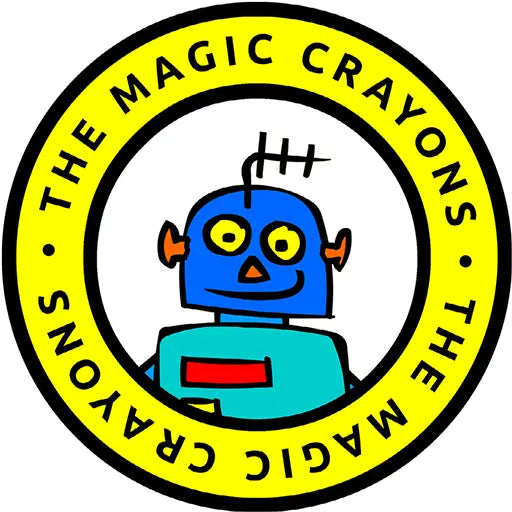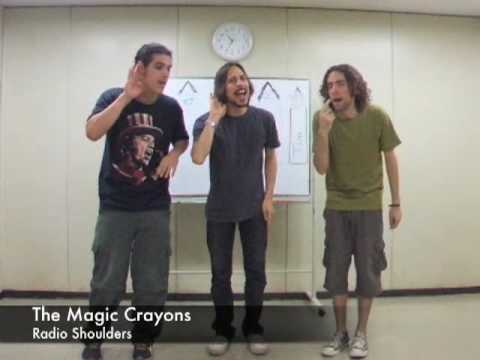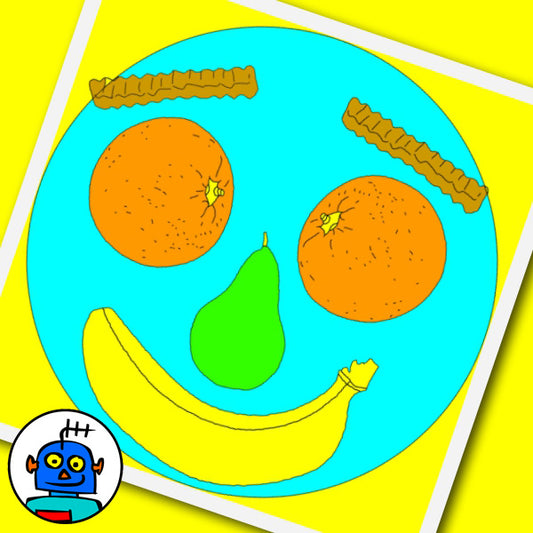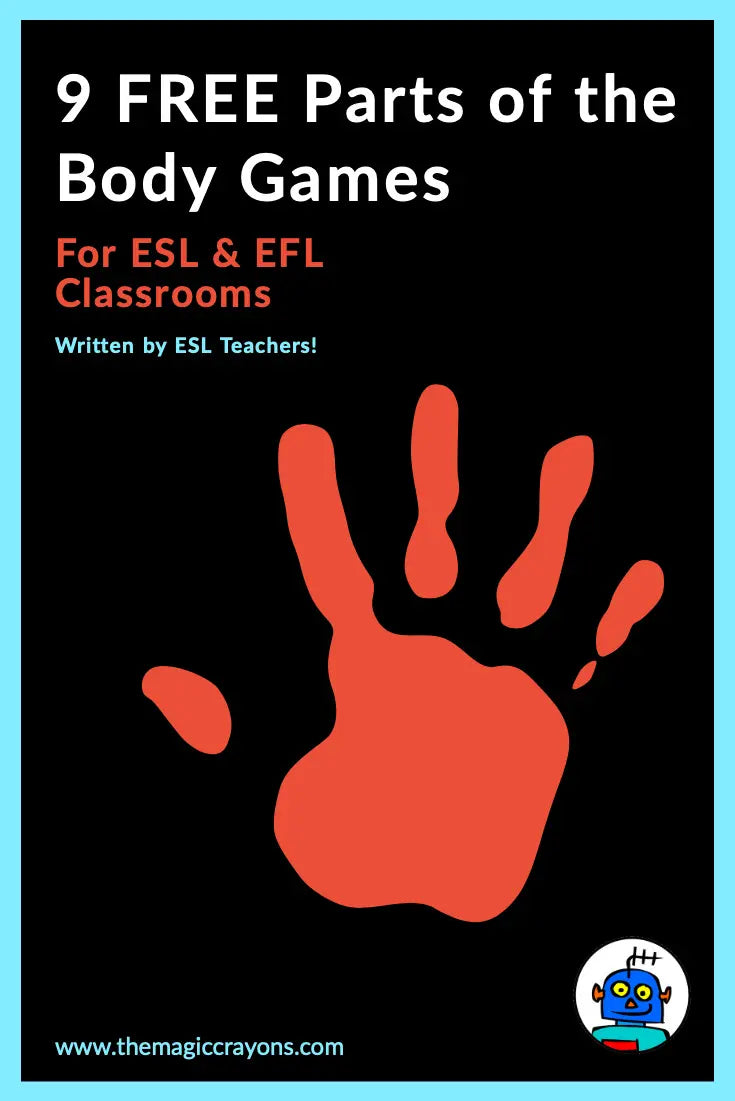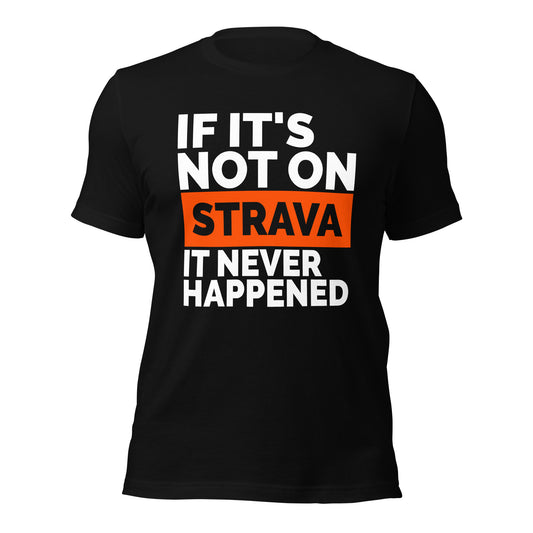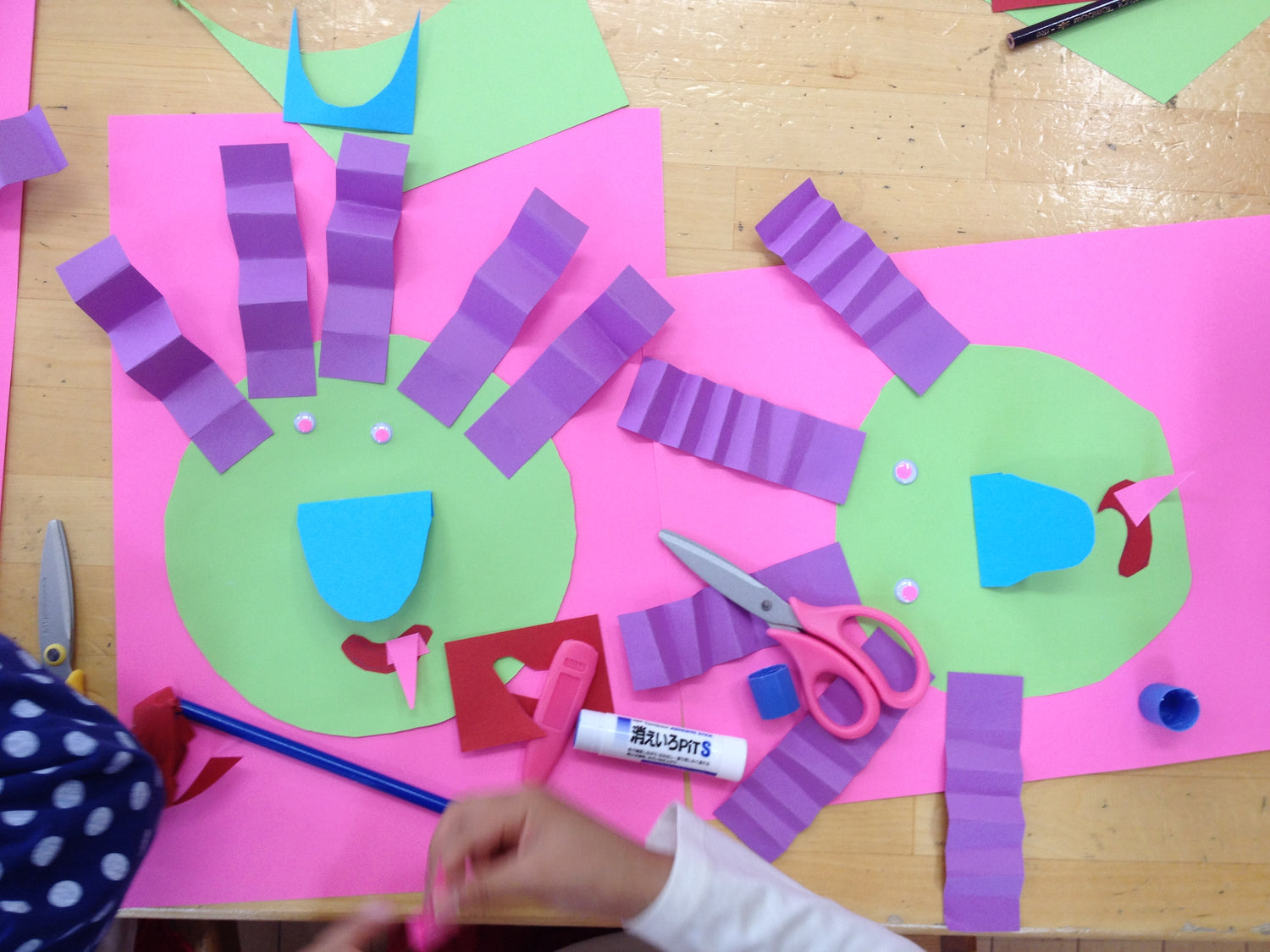
Free Parts of the Body Games for the ESL Classroom
Fun & Interactive Activities. Teach body parts vocabulary with engaging ESL games for young learners!
>Games >Parts of the Body
Welcome to our collection of free parts of the body games designed specifically for the ESL classroom. These fun and interactive activities help young learners build their body parts vocabulary while developing their listening and speaking skills. Featuring engaging games like Crazy Body Parts, Bodiless, and Make A Face, our resources include flashcards, songs, and printables perfect for EFL and ESL teachers. Download and print today to make learning English body parts exciting and effective for your students!
-
1. Crazy Body Parts
Resources
- Parts Of The Body Flash Cards
How to play
Set up - Have a fun song in the cd player, and when you start the music, the children must dance around the room, when you stop the music, put up a body flash card, or just yell out the vocabulary. Then the children must find a partner and touch the appropriate body part on the other child for example:
- Hands - touch palms of hands together and sit down,
- Feet/Toes - lay down on their backs and put the souls of their feet together
- Shoulders - get back to back with the partner and sitzz down
- Knees - kneel down in front of each other knees touching
But there is a crazy catch, if you yell out Head, the kids must find a partner and do the head shoulders knees and toes song as fast as they can then sit down.
-
2. Bodiless
Resources
- Parts Of The Body Flash Cards
How to play
Time: 6-8 minutes
Receptive Language: “No (body part)”
Productive Language: body parts, flashcard vocab
Game Explanation: Review body parts with the students and introduce the “No (body part)” concept. In teams or independently, the students must then transport flashcards from one end of the room to the other while following your commands: “No hands”, “No legs”, etc, Make sure the students correctly identify the flashcards they’re transporting. -
3. Doctor Feelgood
Resources
- None
How to play
Time: 6 minutes
Receptive Language: instructions, colours, body parts
Productive Language: colours, body parts
Game Explanation: Basically an extended version of Colour Touch, Dr Feelgood is played by having the students touch various items of a certain colour (as decided and called out by you, the instructor, at least at first) with specified body parts (hand, nose, knee, etc). -
4. Make A Face
Resources
- Large Envelopes (Amazon #Ad)
How to play
Time: up to 10 minutes
Receptive Language: instructions, body parts, various
Productive Language: various, body parts
Game Explanation: Prepare 5 envelopes, each containing up to 6 different laminated facial body parts (i.e., one for noses, one for eyes, etc). Divide the students into teams & have them perform a task (identify flashcards, answer questions, etc). The winning team gets to pick one body part from one envelope. The first team to complete their face wins.
Note: To make the game a little harder (& a lot longer), mix the body parts up & divide them haphazardly among the envelopes so that the students will never be sure just what feature they’re going to get. -
5. Monstrosities
Resources
- Parts Of The Body Flash Cards
How to play
Time: 6-7 minutes
Receptive Language: various
Productive Language: various
Game Explanation: Review body parts, colours, etc. Either individually (at the whiteboard) or all at once (on their own pieces of paper), the students must draw the wacky monster that you describe for them: three heads, nine eyes, two mouths, long purple hair, etc. Let the drawer of the best (that is, most accurate) picture describe the next monster to be drawn.
Parts Of The Body Resources
-
Radio Shoulders. English Song about Parts of the Body
Vendor:The Magic CrayonsRegular price $0.99 USDRegular priceUnit price per -
Food Face Craft | Digital Download
Vendor:The Magic CrayonsRegular price $3.00 USDRegular priceUnit price per
-
6. Please Touch (Simon Says)
Resources
- None
How to play
Time: 5 minutes
Receptive Language: instructions, ‘Please touch your [body part]’
Productive Language: none -
Have the students stand in a circle & demonstrate that when you call out ‘Please touch your [body part]’ the students must do so as quickly as possible, but that if you only call out ‘Touch your [body part]’ they are not to do so. Any students that make a mistake sit down. Continue play until there are a handful of champions, until only one student remains, or you’ve successfully knocked them all of the students out of the game.
-
7. Stuck On You
Resources
- Parts Of The Body Flash Cards
- Pillow case / bag
How to play
Time: 6-8 minutes
Receptive Language: instructions, body parts
Productive Language: body parts
Game Explanation: Review body parts. Pair the students off & have them stand at one end of the classroom or play area. Each pair of students draws 2 cards from the bag; these are the body parts that will be ‘stuck’ together (e.g., hand & nose). After all the students are ‘stuck’ they must race to the other side of the classroom / play area & back. Penalize or disqualify any pairs that become unstuck during the course of the race, & laugh uproariously at the pairs that triumph - or don’t - over difficult matches (nose-foot). -
8. Body Spell
Resources
How to play
Time: 5-8 minutes
Receptive Language: “Make an (E, M, etc)”
Productive Language: alphabet
Game Explanation: Divide the students into teams. Call out or show the students an alphabet card. The teams must then lie down and attempt to form the letter you’ve asked for. Award points to the fastest or most accurate team. This game can also be played individually, with each student attempting to contort their body into the correct letter shape (also amusing for ‘S’). -
9. Twister
Resources
- Parts Of The Body Flash Cards
How to play
Time: 5-8 minutes
Receptive Language: instructions, ‘left/right foot’, ‘left/right hand’ etc
Productive Language: colours
Game Explanation: Students can compete as individuals or in teams, two at a time or all at once. Arrange the colour flashcards on the floor. Call out ‘Left foot, red!’ & so on. The students are not allowed to have any part of their bodies touching the floor but their hands & feet. If they fall over, they’re out. The last student standing is declared the champion.
Note: Maybe because kids tumble about all day but there are occasions when this game is not as popular as one may imagine. Maybe best suited to the staff party :-)
Like it? Share it!
Best selling gifts
-
Cyclist T-Shirt – If It’s Not on Strava, It Never Happened
Vendor:The Magic CrayonsRegular price From $27.00 USDRegular priceUnit price per -
Yellow Forklift Certified Cap
Vendor:The Magic CrayonsRegular price $30.00 USDRegular priceUnit price per -
Backhoe Trucker Cap, Adult C004
Vendor:The Magic CrayonsRegular price $30.00 USDRegular priceUnit price per -
Road Grader Truckers Cap C002
Vendor:The Magic CrayonsRegular price $30.00 USDRegular priceUnit price per
